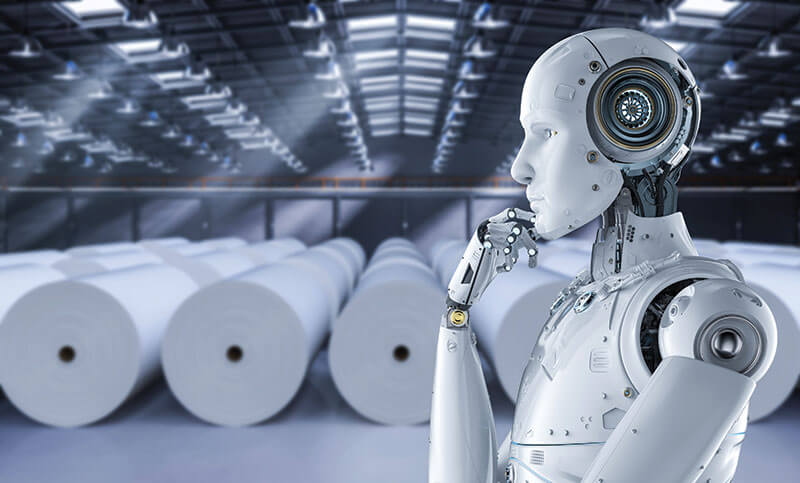In view of the different innovations taking place in the paper industry and the envisioned roadmap in this regard, Paper Mart presents a special feature on the technology, upgradations, and more.
The global paper & pulp market size is expected to reach USD 740.76 billion in 2030 and register a revenue CAGR of 3.2 percent as per the latest report published by Reports and Data. Meanwhile, according to the industry body Indian Paper Manufacturers Association (IPMA), the paper consumption in India is likely to witness 6-7 percent annual growth and reach 30 million tonnes by FY 2026-27.

While India currently accounts for 5 percent of the world’s share, the production of paper in the country has been increasing every year, largely driven by an emphasis on education coupled with growth in e-commerce and organised retail segments amid single-use plastic ban. From raw material augmentation to water recycling measures, the paper mills have been taking remarkable steps in every process of paper-making to remain globally competitive.
Not just production, the export scenario of the sector looks equally promising. As per a recent statement by IPMA, paper & paperboard exports from India reached INR 13,963 crore in FY 21-22, up nearly 80 percent year on year. It further added that exports have been rising in the last few years due to capacity expansion and technological upgradation undertaken by Indian paper mills, leading to better product quality which has found wider acceptance globally.
Watch: Evolution of Paper Based Packaging
The Past: When the Industry Embraced Sustainability…
Until 1995, ETP was installed with conventional technology and there was less focus on its functioning. The mills were consuming a huge amount of water and the effluent load to ETP and discharges were also high. However, the next 10 years saw tremendous technology upgradation in all sections of the mills. The pulp mills got modernised, efficient disc filters were upgraded and functioning of ETPs was greatly improved. Other technological advancements witnessed in the Indian paper industry include ECF bleaching, alkaline papermaking, a significant reduction in energy and steam consumption and improvement in the overall environmental management of the mill.
The Present: R&D and Innovation Happening in Big Ways
While wood-based paper mills have been able to develop clonal saplings to grow in harsh conditions, the agro-based segment has mastered the art of fine paper making from what was previously considered an inferior raw material. Indian paper mills are continuously investing in R&D to develop a competitive advantage over other nations.
An example of this is JK Paper Ltd. which has always leveraged technology for constant product upgradation. “On the pathway of moving the focus from commodity to branded and high-value categories, JK Paper Ltd. has undergone major technical up-gradation in the machines and processes for manufacturing paper. It was the first company to introduce surface-sized maplitho and laser paper in India. In a first-of-its-kind move in the branded paper segment, JK Paper joined hands with Hewlett Packard (HP) to avail of its ColorLok technology in producing copier paper,” said Mr. PK Suri, Technical Advisor, JK Paper Ltd., adding “A lot of R&D work is still going on, as we have recently commissioned a new board machine in the Central Pulp Mill that has a range of special features such as making online aqueous coated boards, which can be directly used for the cups, unlike PE coating.”
The Future: On the Threshold of Industry 4.0
The fourth industrial revolution, also referred to as Industry 4.0 is here to change the face of the industry by enabling the mills to gather and analyse data across machines, which entails faster and more efficient processes for the production of higher quality products at lesser costs. Digitalisation has proven to be beneficial in areas such as energy-efficiency, productivity, reliability, safety and quality. Technologies such as automation, data analytics, robotics, etc., are instrumental in solving problems that seemed difficult to overcome through manual interventions. Besides increasing productivity, the manufacturing revolution will foster industrial growth and ultimately change the competitiveness of companies in an unbelievable way. While the paper industry still has a long way to go in the area of automation, the mills have understood that integrating all the functions within the industry is the need of the hour.
Talking about the Industry 4.0 initiatives taken by Tamil Nadu Newsprint and Papers Ltd. (TNPL), Mr. SVR Krishnan, Executive Director (Operations), TNPL says, “Though many companies invested heavily in ERP/SAP systems, the effective utilisation of such systems for business performance is still less and TNPL is not an exception to this. The point is that having understood the gaps, TNPL now focuses on the training of the total workforce for the systems and also putting controls wherever needed. All the quality testing and reporting are done through ERP and also the process parameters are auto-controlled and captured in ERP.”
“Online data captured through DCS, QCS and Power Bi is flashed to the mobile phones and iPad of all the senior executives and the controls are real-time. There are analyses on the sudden changes and long-term variations to take appropriate actions in the process. The real-time data capturing and subsequent analysis help us in taking very proactive steps towards predictive and preventive maintenance,” he added.
Also Read: Indian Paper Industry and Its Post Pandemic Prognosis
In its latest report ‘Perspectives on paper and forest products in 2022,’ McKinsey & Company revealed that the immediate future of the paper and forest products industry will be characterised by two principal dimensions of change: sustainability and digital & analytics. As we celebrate National Technology Day on May 11, Paper Mart interacts with a few companies to know their technical reforms along with the key trends they foresee in the industry.



